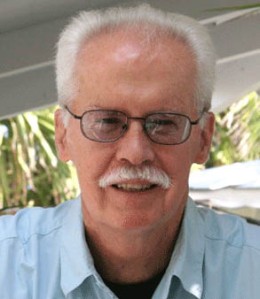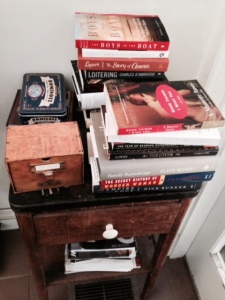 I hadn’t heard or read anything about The Fair Fight before I saw it on the new books shelf at the Key West Library. But I’m a sucker for historical fiction so I checked it out. And you know what? It was great. Really great. After a recent disappointment reading a book set in the same era, it was especially nice — and because the book is the first from this writer, Anna Freeman. Here’s hoping for many more. And here’s to my local library (and yours, I imagine), which not only keeps providing all kinds of services to people who really need them but also, because someone decided to order an interesting book, provided me with an excellent reading experience that I didn’t even know I was looking for.
I hadn’t heard or read anything about The Fair Fight before I saw it on the new books shelf at the Key West Library. But I’m a sucker for historical fiction so I checked it out. And you know what? It was great. Really great. After a recent disappointment reading a book set in the same era, it was especially nice — and because the book is the first from this writer, Anna Freeman. Here’s hoping for many more. And here’s to my local library (and yours, I imagine), which not only keeps providing all kinds of services to people who really need them but also, because someone decided to order an interesting book, provided me with an excellent reading experience that I didn’t even know I was looking for.
The story is told from three different points of view, which has something of that Rashomon effect — the same events from different angles — and also provides a rich understanding of the time as it would be lived by a poor young woman, a wealthy young woman who has been orphaned and afflicted by smallpox, and a younger son who links his destiny to his feckless, alcoholic school friend (who also happens to be the brother of the wealthy young woman).
Ruth, the poor young woman, is making her way as a prizefighter. Apparently this did happen — women boxed. She is born into a brothel without many prospects but her fighting does bring her to the attention of a large and strong young man.
I don’t want to go too far into the plot … rather I recommend this book to anyone who read and enjoyed Blindspot, Jane Kamensky and Jill Krementz’s homage to 18th century romps. That has a very different setting and plot but is also told through the points of view of two characters. And it shares the appreciation of the era but with a contemporary enough sensibility to allow us to access it without feeling like we’re inhabiting a museum piece.
 I mentioned in my last post that I really liked another book I checked out from the library — The Trip to Echo Spring. But as long as I’m wholeheartedly recommending books … This examines the lives of six writers through the lens of alcoholism. Which would be easy enough to do reductively, but Olivia Laing manages to do it expansively, to see her subjects as tragic figures, true, but also as gifted, inspired and at times heroic. For Key Westers, there’s the connection with Ernest Hemingway and Tennessee Williams. But for anyone interested in 20th century American literature, it’s a thoughtful survey and investigation into the lives of six of our greatest writers — besides Williams and Hemingway, she writes about F. Scott Fitzgerald, John Cheever, Raymond Carver and John Berryman. Even though I’d already read a lot about most of those guys (all except Berryman), I found it an interesting and enlightening book — the best kind of literary biography where the writer and the work are connected without assuming that all writing is autobiographical or some kind of psychological puzzle to be deciphered. I also liked following Laing’s travels around the U.S., much of it by rail, as she visited the places that the writers lived. It sounds like she wandered through my neighborhood (Tennessee Williams’ house is about three blocks from mine). I wish I’d known — I would have invited her in for a drink.
I mentioned in my last post that I really liked another book I checked out from the library — The Trip to Echo Spring. But as long as I’m wholeheartedly recommending books … This examines the lives of six writers through the lens of alcoholism. Which would be easy enough to do reductively, but Olivia Laing manages to do it expansively, to see her subjects as tragic figures, true, but also as gifted, inspired and at times heroic. For Key Westers, there’s the connection with Ernest Hemingway and Tennessee Williams. But for anyone interested in 20th century American literature, it’s a thoughtful survey and investigation into the lives of six of our greatest writers — besides Williams and Hemingway, she writes about F. Scott Fitzgerald, John Cheever, Raymond Carver and John Berryman. Even though I’d already read a lot about most of those guys (all except Berryman), I found it an interesting and enlightening book — the best kind of literary biography where the writer and the work are connected without assuming that all writing is autobiographical or some kind of psychological puzzle to be deciphered. I also liked following Laing’s travels around the U.S., much of it by rail, as she visited the places that the writers lived. It sounds like she wandered through my neighborhood (Tennessee Williams’ house is about three blocks from mine). I wish I’d known — I would have invited her in for a drink.









